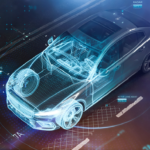Safety features in modern cars – how effective are they?

It doesn’t seem all that long ago that seat belt use was optional and airbags were treated with
suspicion, but the extensive safety features in modern cars have made driving safer than ever, right?
Statistics seem to suggest this is the case, with deaths from road traffic accidents declining steadily
decade on decade.
Let’s take a look at some of the features that are responsible for keeping us safer on the road than
ever before, and the statistics to back their use up.
Modern cars are designed to crash
One of the unsung safety features in modern cars is the car’s frame itself. It may not be as exciting as
computer-assisted braking or parking, but it’s a fundamental of physics that energy has to go
somewhere and it’s far better that your car crumples and absorbs impact than the shock is sent
through your body. This is achieved by using different strength steel throughout the frame –
stronger around the cabin and weaker in the crumple zones.
Smarter cars are safer cars
Although fully autonomous driving is still in its infancy, it’s clearly the future – especially for
motorway journeys because it reduces driver fatigue.
But until we reach that point, there are some incredibly smart additions to modern cars that reduce
accidents and improve safety for all road users:
- Automatic emergency braking – AEB warns you of obstacles that you’re about to hit and
applies the brakes if you’re not quick enough to respond.
Forward-collision warning – FCW scans the road ahead and predicts danger using radar and
cameras. - Reversing cameras – these have been around for a long time now, but the latest versions
offer a 360* panoramic view for better visibility than ever before. - Lane departure warning – many accidents on motorways are caused by drivers drifting out
of their lane. This soon to be standardised system and will warn the driver when they leave
their lane. These can include a blind spot warning that vibrates the steering wheel if you try
to change lanes and your blind spot is occupied. - Automatic parking – while it’s unlikely that a parking accident will cause you harm, it is a
source of stress for many drivers. Automatic parking overcomes this by using sensors and
cameras to park the car safely for you – even in a modern car park like Trafalgar Street.
It’s clear that these features make a difference, but how much? One report suggests that AEB and
FCW alone lower injuries from accidents by over 20% and vehicles with blind spot monitoring are
14% less likely to crash. Once all of these safety features in modern cars become widespread we’re
sure that incidents across the board will drop, and that’s great news for all of us.

